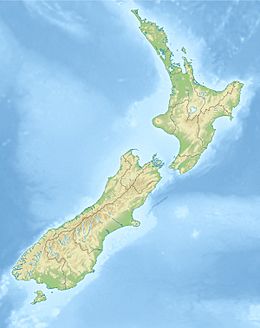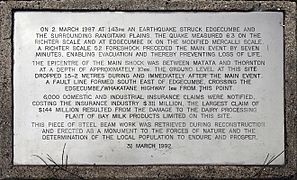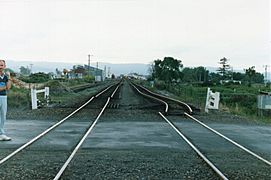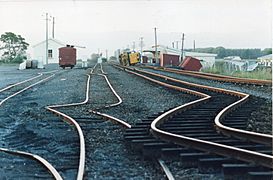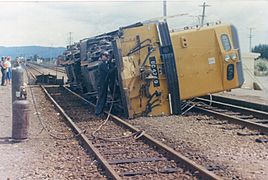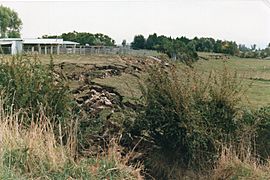1987 Edgecumbe earthquake facts for kids
 |
|
| UTC time | 1987-03-02 01:42:34 |
|---|---|
| ISC event | 470420 |
| USGS-ANSS | ComCat |
| Local date | 2 March 1987 |
| Local time | 1:42 pm NZDT (UTC+13) |
| Magnitude | 6.5 Mw |
| Depth | 8 kilometres (5 mi) |
| Epicenter | 37°53′S 176°50′E / 37.88°S 176.84°E |
| Areas affected | New Zealand |
| Tsunami | None |
| Casualties | 25 injured |
The 1987 Edgecumbe earthquake was a strong earthquake that hit the Bay of Plenty area in New Zealand. It happened at 1:42 PM on March 2, 1987. The earthquake measured 6.5 on the moment magnitude scale. It started about 8 kilometers (5 miles) deep underground. The main spot on the surface, called the epicentre, was near the towns of Matata and Edgecumbe. This earthquake caused the most damage in New Zealand since the 1968 Inangahua earthquake.
Contents
What Happened During the Earthquake?
The main earthquake was not the first shaking people felt. For two weeks before, there were many smaller earthquakes, called earthquake swarms. One swarm started on February 21 near Te Puke. Another started on February 26 closer to the main earthquake's centre.
Then, at 1:35 PM on March 2, a smaller earthquake (5.2 magnitude) hit. This was a foreshock. Just seven minutes later, the big 6.5 magnitude earthquake struck. It seems the main earthquake actually happened in two or maybe three quick parts. The biggest aftershock (5.6 magnitude) happened nine minutes later.
Ground Changes
The earthquake caused 11 cracks to appear on the ground in the Rangitaiki Plains. Before this, no active cracks (faults) were known there. The biggest crack, called the Edgecumbe Fault, was 7 kilometers (4.3 miles) long. It made an old, hidden crack even bigger.
The land on one side of this crack dropped by up to 2.1 meters (7 feet). This area is now more likely to flood. The most amazing part of the crack was a deep, wide split in the ground. It was up to 3 meters (10 feet) wide and 3–4 meters (10–13 feet) deep.
The Rangitaiki Plains are part of the Taupo Volcanic Zone. This area is slowly pulling apart. During the Edgecumbe earthquake, the land actually widened by 1.2 meters (4 feet). The strong shaking also caused other ground problems. These included sand boils (where sand and water burst out of the ground) and landslides on steep hills.
Damage and Injuries
The towns of Edgecumbe, Te Teko, Kawerau, Matata, and Thornton were hit the hardest. Many chimneys fell, and houses that were not built very well were badly damaged. Edgecumbe was the worst affected, with about half of its houses damaged.
The town's milk factory was also badly damaged. Large storage tanks fell over. Railway tracks in Edgecumbe were bent and twisted. An 80-tonne train engine even fell over!
Twenty-five people were hurt and needed medical help. But thankfully, no one was killed. The smaller earthquake (foreshock) that happened seven minutes before the main one cut off the power. This meant many people moved away from dangerous machines and out of buildings. This likely saved lives when the main earthquake hit and buildings collapsed.
Pictures from the Earthquake


